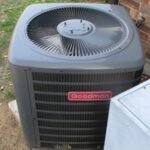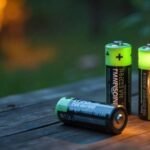When selecting soccer footwear, understanding the specific designations can significantly impact your performance and safety. One common abbreviation encountered is “FG,” which stands for “Firm Ground.” This designation indicates that the cleats are optimized for use on natural grass fields that are neither overly soft nor excessively hard.
Characteristics of FG Soccer Cleats
FG soccer cleats are engineered to provide optimal traction on firm, natural grass surfaces. Key features include:
-
Stud Configuration: These cleats typically feature non-removable studs that are either bladed or conical in shape. This design ensures stability and grip during play.
-
Sole Plate Material: The sole plates are usually made from hard thermoplastic polyurethane (TPU), offering durability and support on firm ground.
Appropriate Surfaces for FG Cleats
FG cleats are best suited for:
-
Natural Grass Fields: They perform optimally on well-maintained natural grass pitches that are dry or slightly damp but not muddy.
-
Artificial Grass (Caution Advised): While some players use FG cleats on artificial grass surfaces, it’s important to note that this can lead to increased wear on the cleats and potential discomfort or injury due to the harder surface.
Differentiating FG from Other Cleat Types
Understanding the distinctions between FG cleats and other types is crucial for selecting the appropriate footwear:
-
Soft Ground (SG) Cleats: Designed for wet, muddy fields, SG cleats typically have longer, often metal, detachable studs to provide traction on soft surfaces.
-
Artificial Ground (AG) Cleats: These are specifically designed for artificial grass surfaces, featuring shorter, more numerous studs to distribute pressure evenly and reduce the risk of injury.
-
Turf (TF) Shoes: Ideal for older artificial turf or hard surfaces, turf shoes have an outsole with numerous small rubber studs to provide grip without penetrating the surface deeply.
-
Indoor (IN) Shoes: Designed for indoor courts, these shoes have a flat, non-marking rubber outsole to provide grip on hard, smooth surfaces.
FAQ
1. Can I use FG cleats on artificial turf?
While it’s possible, it’s not recommended. Using FG cleats on artificial turf can lead to increased wear on the cleats and potential discomfort or injury due to the harder surface.
2. What happens if I wear FG cleats on soft, muddy fields?
FG cleats may not provide adequate traction on soft, muddy fields, leading to slipping and reduced performance. For such conditions, Soft Ground (SG) cleats are more suitable.
3. Are FG cleats suitable for indoor play?
No, FG cleats are not designed for indoor surfaces. Indoor (IN) shoes with flat, non-marking soles are appropriate for indoor play.
4. How do I maintain my FG cleats?
Regularly clean them after use, remove debris from the studs, and allow them to air dry. Avoid exposing them to extreme heat to prolong their lifespan.
5. Can FG cleats be used on both natural grass and artificial grass?
While FG cleats are designed for natural grass, some players use them on artificial grass. However, this can lead to increased wear and potential discomfort or injury.
Selecting the appropriate soccer cleats, such as FG cleats for firm natural grass surfaces, is essential for optimal performance and injury prevention. Understanding the specific designations and their intended use ensures that players are equipped with the right footwear for their playing conditions.
Keep reading further down this article exploring-the-benefits-and-maintenance-of-an-18-foot-above-ground-pool










